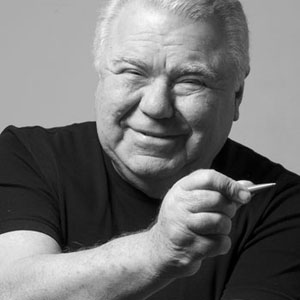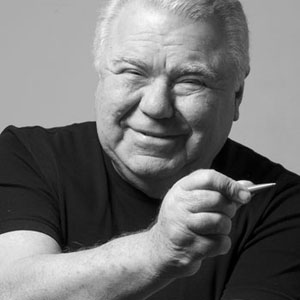 This interview originally appeared in The Dirt.
This interview originally appeared in The Dirt.
Jaime Lerner was elected mayor of Curitiba, Brazil, in 1971, and reelected two more times before serving as governor of the Brazilian state of Paraná. As mayor, Lerner devised a number of low-cost solutions and innovative partnerships with the public and private companies that turned Curitiba into a model green community. He has won a number of major awards for his transportation, design, and environmental work, including the United Nations Environment Award. In 2002, Lerner was elected president of the International Union of Architects. Today, he is principal of Jamie Lerner Associated Architects.
Q. You’ve argued that cities are the solution to climate change, not the problem. What is the case for this?
A. Well, my point of view is that there are many, many answers to what would be the best way to avoid climate change. A lot of people are talking about new materials. Or new sources of energy. Or wind turbines. Or recycling. They’re really important but not enough. When we realized that 75 percent of car emissions are related to the cities, we realized we can be more effective when we work with the concept of the city. It’s through cities that we can have better results.
Q. What do you see as the relationship between livability and sustainability?
A. Every time we try to create a solution, we have to have a good equation of co-responsibility with the public. That means it’s not a question of money and it’s not a question of skill; it’s how do we organize the equation of co-responsibility?
For example, when I was governor we had to work hard to reduce pollution in our bays. Of course, it’s very expensive to do environmental cleanup work and we didn’t have the money. Another region had taken out a huge loan from the World Bank, about $800 million. For us though, the question wasn’t about money; the question was about mentality. We started to clean our bays through an agreement with fishermen: If the fisherman catches a fish, it belongs to him; if he catches garbage, we buy the garbage. If the day was not good for fishing, the fishermen went to fish garbage. The more garbage they caught, the cleaner the bays became. The cleaner the bay was, the more fish they would have.
It’s that kind of win-win solution we need. We need to work with low-cost solutions.
Q. You also decentralized garbage collection. One program to clean up dirty, narrow streets that were inaccessible to trash collectors gave residents bags of groceries or transit passes in return for their garbage. How well did this program work?
A. It’s been working for more than 20 years in Curitiba. In many cities, there are places where it’s difficult to provide trucks access to collect garbage. In many cities, if the slums are on the hills or deep in valleys, they’re difficult to access. In these places, people are throwing away their garbage and polluting the streams. Their children are playing in polluted areas. In 1989, we started a program where we said, “Okay, we’re going to buy your garbage as long as you put your garbage in a bag, and bring it to the trucks, where it’s more accessible.” In two or three months, all these areas were clean, and these very low-income people had an additional source of income.
We also started public education programs on the separation of garbage [into separate streams for recycling, composting, etc.] because we realized that we could transform one problem if we separated garbage in every household. We started teaching every child in every school. Children taught their parents. Since then, Curitiba has had the highest rate of separation of garbage in the world for more than 20 years. Around 60 or 70 percent of families are separating their garbage at home.
Q. As mayor of Curitiba, you created the world’s first bus rapid transit system (BRT), “Speedy Bus,” which works like a surface subway system but at far less cost. How did you form the public-private partnership that made it cost-effective?
A. We didn’t have the money for a completely new fleet, which would have cost $300 million. What was the equation? What was the solution? We said to the private sector, private companies, “We’ll invest in the itinerary as long as you invest in the fleet. We’ll get loans for the work on our side, for public works, for the itinerary, if the private sector gets loans for the fleet.” We paid them by kilometers and there are no subsidies. The system pays for itself. Now, there are more than 83 BRT systems around the world.
The problem is in many countries, government wants to invest in everything. That doesn’t work. I’ll give you an example. Why don’t we have a good system of transport in New York on the waterfront? This could be a very good approach for reducing congestion in the city’s bridges and tunnels. The city could have a very pleasant system of water public transport. But instead, the policymakers are holding it up, saying there are no passengers and we don’t want to invest in the fleet. First, they need to create a good partnership and create an attractive system, then they will have the passengers, and then they will have a low-cost solution.
Q. You’ve also mentioned that many poor copies of your BRT are out there, and are actually setting back BRT as a transportation movement. What are other cities doing wrong?
A. BRT can’t be designed as a transportation solution. It has to be planned as a whole city. Why? Because the city is a structure of living, working, and leisure. Everything together. Transportation has to provide a structure for living and working together. It can’t just be a system of transport. You will just have a kind of commuting system, which is more difficult to make feasible. With that kind of approach, you will only use public transport twice daily, concentrated in just a few hours. If you have a system that works always and connects working and living activities, it’s more a city [approach] than just a corridor of public transport.
Q. Now you have your own architecture and urban design firm and you are working with major city governments and private clients throughout the Americas. What kind of projects are you working on?
A. Sustainability is an equation between what we save and what we waste. There are so many problems of mobility or integration of systems, but we have to work fast. If we understand the city as a structure of living, working, moving together, we can work more effectively …
For instance, in Sao Paolo, they have three subway lines. They are working on fourth line of the subway, with 84 percent of the trains running on the surface. It’s the surface that has to operate better. At the same time, the suburb railroad is being improved. The idea is to take advantage of the existing path of the suburb railroads and build above the rail a kind of linear park like the High Line. However, this linear park would link the whole city, where you can connect people of all income levels. In every place, you could have good public transport and you have a huge park linking it all. Within this park, you could walk, bike, or take small electric cars.
Sometimes there’s an idea and it has to be improved. In other cases, we use “urban acupuncture.”
Q. At the street level, you’ve been experimenting with “portable streets,” creating informal and spontaneous market street life.
A. Some places in some cities have become decayed. There’s no life. When that happens, it’s very difficult to bring back life because people don’t want to live in a place like that. However, the moment we bring street life, people will want to live there again. That’s why we designed the portable streets. On a Friday night, we can deliver a portable street and remove it Monday morning. We can put a whole street life in front of a university or any place, bringing street life back …
These are small interventions that can provide new energy to the city, and provide assistance during the process of long-term planning, which has to take time. But we have to work fast.



